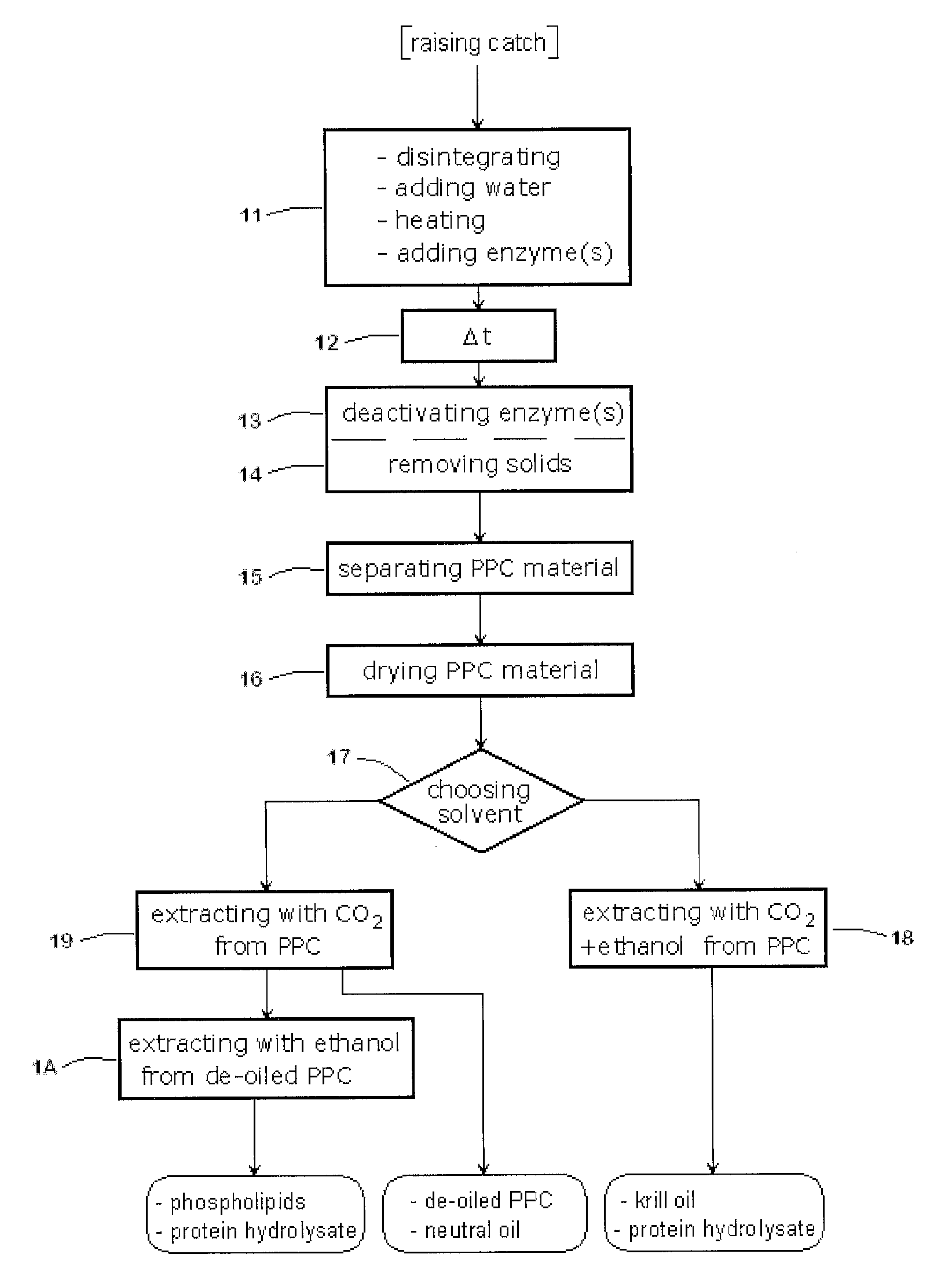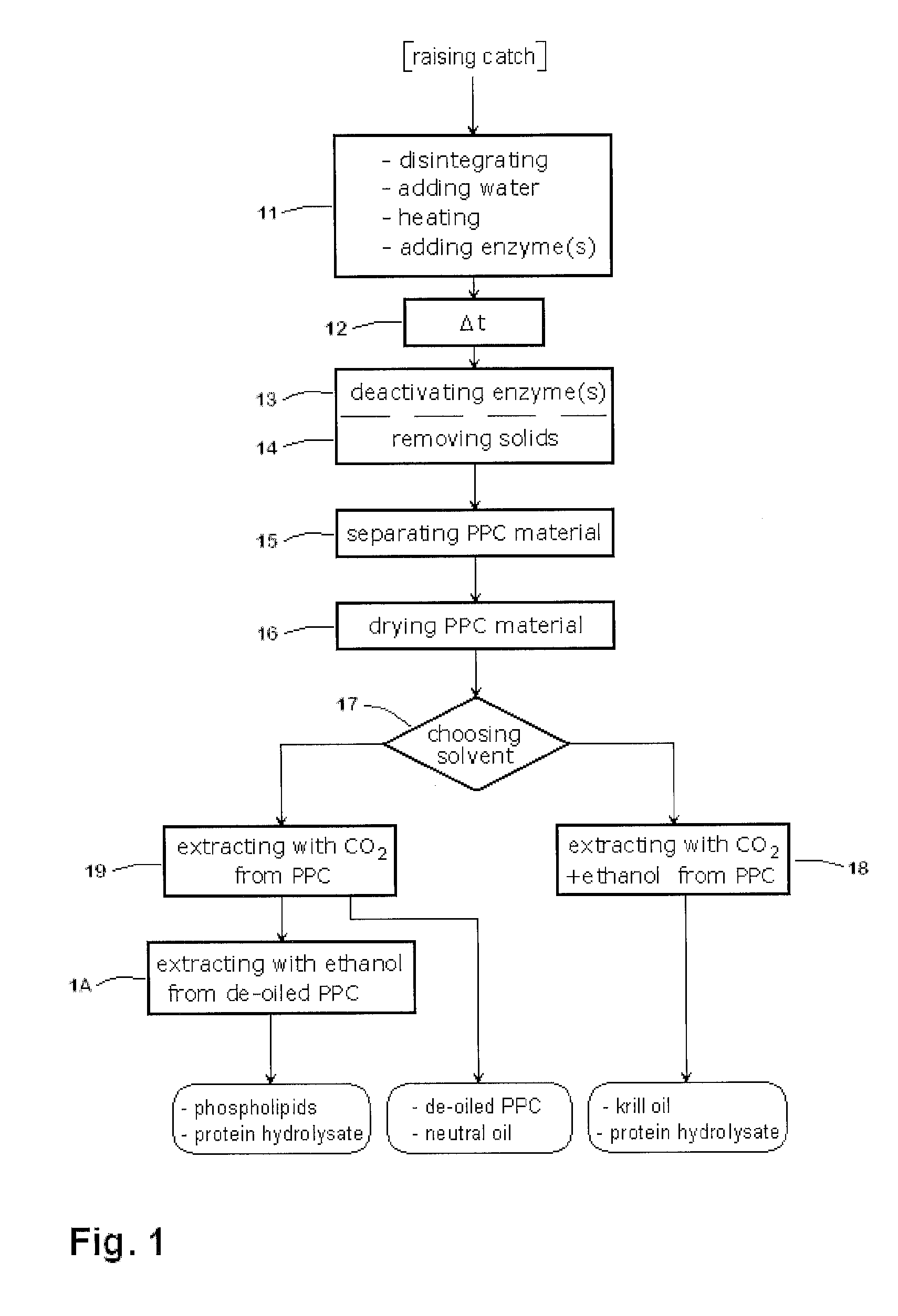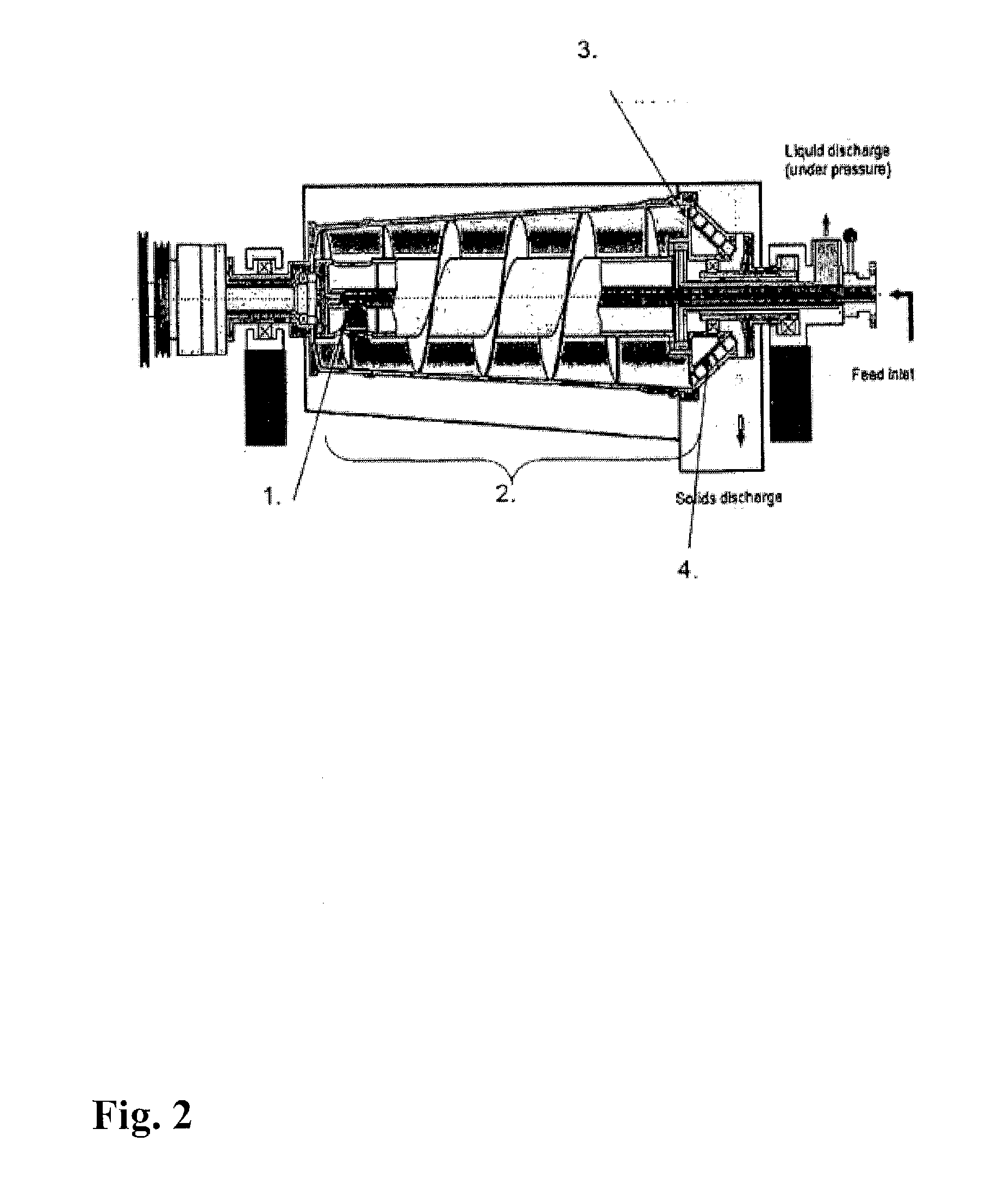Method For Processing Crustaceans And Products Thereof
a technology for crustaceans and products, applied in the field of processing crustaceans, can solve the problems of kyphosis, crippling and invalidism, unfavorable health, and unwanted trace material in products, and achieve the effects of facilitating the extraction of lipids, low pressure, and reducing production costs
- Summary
- Abstract
- Description
- Claims
- Application Information
AI Technical Summary
Benefits of technology
Problems solved by technology
Method used
Image
Examples
example i
Production of Low Fluoride Krill Oil
[0108]5 kg batches of PPC feed material in granular faun was processed using CO2 as solvent and azeotropic food grade ethanol as co-solvent, the weight of the ethanol being 23% of the weight of CO2. The plant was pre-pressurised to operating pressure with CO2 only, and ethanol was added when CO2 circulation started. Solvent to feed material ratio was 25:1 or greater and co-solvent to feed material ratio was 5:1. Runs were carried out under two extraction conditions; 300 bar at 60° C., and 177 bar at 40° C. See, Table II.
TABLE IIExtraction conditionsRun 1Run 2Feed Mass (g, as received)5000.55000.9Extraction pressure (bar)300177Extraction temperature (° C.)6033First separator pressure (bar)9090First separator temperature (° C.)4141Second separator pressure (bar)48-5048-50Second separator temperature (° C.)3939CO2 used with ethanol co-solvent (kg)132.6134.9Additional CO2 at end of run (kg)33.144.5Total ethanol used (kg)31.6532.19
The extracted materia...
example ii
Extraction Efficiency
[0112]This example demonstrates an exemplary analytical extraction with the Soxhlet method.
[0113]The neutral lipids are often part of large aggregates in storage tissues, from which they are relatively easily extracted. The polar lipids, on the other hand, are present as constituents of membranes, where they occur in a close association with proteins and polysaccharides, with which they interact, and therefore are not extracted so readily. Furthermore, the phospholipids are relatively tightly bound with hydrophobic proteins and in particular with the phosphorylated proteins.
[0114]Partial hydrolysis of the protein matrix in the novel krill meal improves the extraction efficiency of total lipid by use of organic solvents as demonstrated by this example involving extraction of krill meal samples with the Soxhlet method by using petroleum ether as solvent. Soxhlet method is a standard method in quantitative determination of fat content of foods and feeds and thus it...
example iii
Determination of Fluoride Content
[0117]This example presents one method of determining fluoride content of krill products as fluoride by chemical analysis using an ion selective electrode.
[0118]The samples analyzed were krill meal and oil extracted from the said krill meal. The krill meals analyzed for fluoride content were produced by: i) a low fluoride method of present invention; and ii) a whole krill material produced by a conventional process. As explained herein, the method disclosed herein removes, in most part, the krill exoskeleton while the krill shell is included in the meal prepared from whole krill according to the conventional process. Conventional processes are, for example, described in WO 2002 / 102394 (Neptune Technologies & Bioresources) and US 2008 / 0274203 (Aker Biomarine ASA).
[0119]The data demonstrate that by removing the exoskeleton in the process of producing krill meal, the fluoride content of the meal and the oil produced from the meal have a markedly reduced...
PUM
| Property | Measurement | Unit |
|---|---|---|
| particle sizes | aaaaa | aaaaa |
| pressure | aaaaa | aaaaa |
| weight | aaaaa | aaaaa |
Abstract
Description
Claims
Application Information
 Login to View More
Login to View More - R&D
- Intellectual Property
- Life Sciences
- Materials
- Tech Scout
- Unparalleled Data Quality
- Higher Quality Content
- 60% Fewer Hallucinations
Browse by: Latest US Patents, China's latest patents, Technical Efficacy Thesaurus, Application Domain, Technology Topic, Popular Technical Reports.
© 2025 PatSnap. All rights reserved.Legal|Privacy policy|Modern Slavery Act Transparency Statement|Sitemap|About US| Contact US: help@patsnap.com



